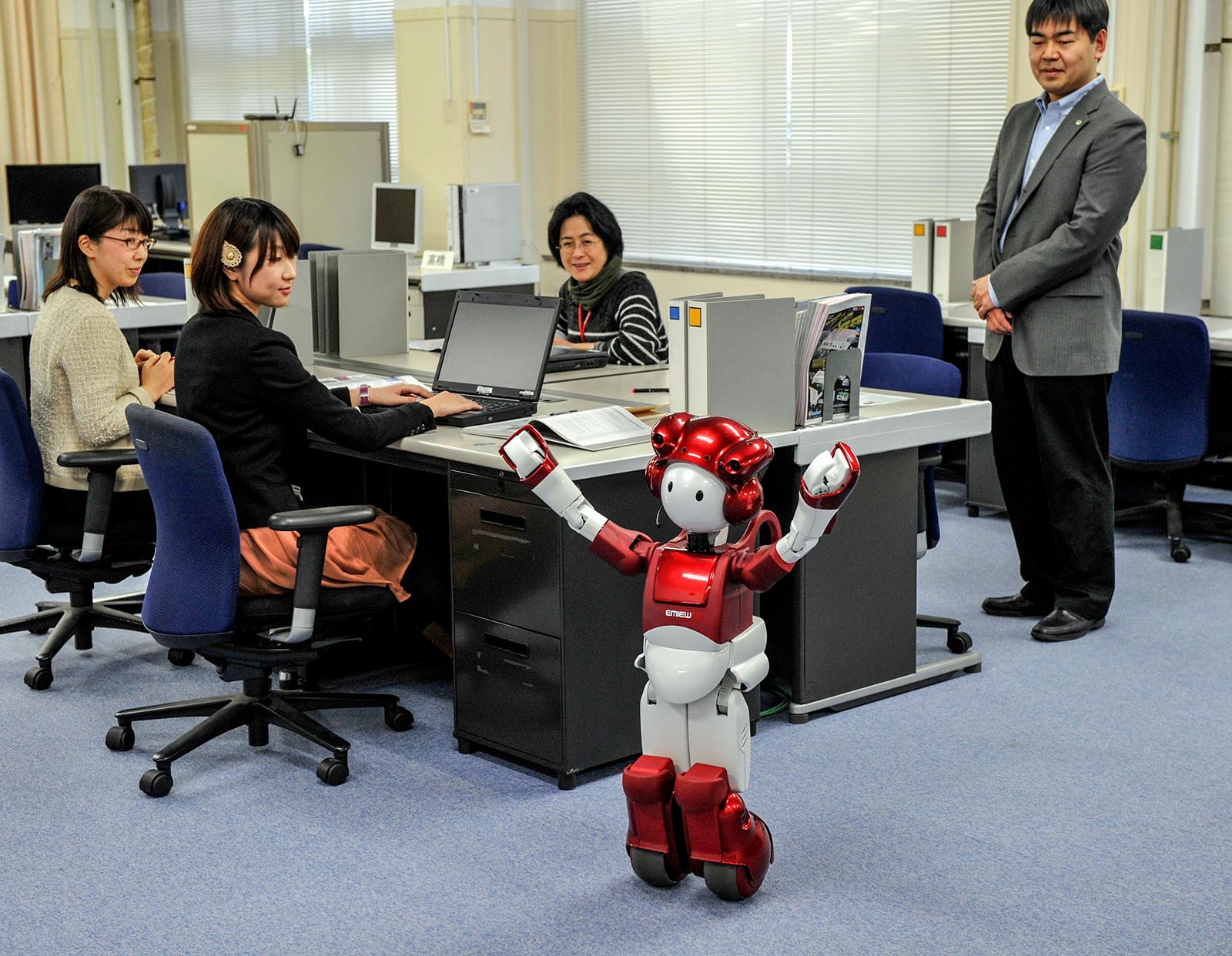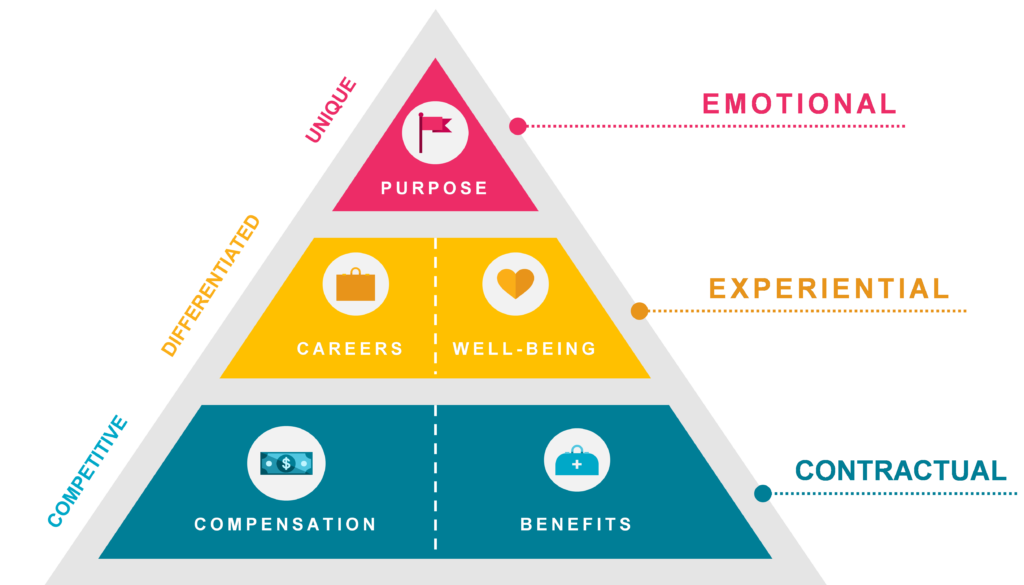Curating a Compelling Employee Value Proposition in Emerging Markets

A humanoid robot at the offices of a Japanese electronics company in Tokyo. While the technologies of the fourth industrial revolution made certain jobs disappear, new jobs have emerged.
Photo: Yoshikazu Tsuno/AFP/Getty Images
Amidst the fastest pace of change in human history, thriving organizations are the ones that have realized that people have become more, not less, important as companies look at completely different ways of creating economic value. When manufacturing processes were automated, design skills became more critical. Yes jobs disappeared, but new jobs emerged. The technologies of the Fourth Industrial Revolution will continue to need new skills, while digitization will enable microeconomies to be built locally—driven by people’s imagination, not the economies of globalization.
Understanding the impact of these changes and preparing people to ride the crest of opportunity is paramount. And this preparation begins with fostering a culture where people can thrive in the workplace. As Louis Gerstner, the legendary CEO of IBM who turned around the tech behemoth back in the 90s famously said, “Culture isn’t one aspect of the game, it is the game.” In a recent article, we introduced Mercer’s research titled, Thriving in an Age of Disruption. The subtext of this title is what is at the very center of this research: “Putting people at the heart of change.”
The New ‘Deal’
Our new perspective of thinking about the new “deal” to enable people to thrive positions rewards into three primary categories of the employee value proposition continuum:
Contractual, which represents the traditional compensation and benefit deal
Experiential, which encompasses the way an employee experiences the organization both inside and outside work—from careers to well-being programs
Emotional, which is represented by the connection created through a sense of purpose. This is driven by the employee’s connection to the vision or mission of the organization as well as its social responsibility initiatives. This includes not only the meaningful impact created through the organization’s products and services, but also the option to provide employees working time and resources to engage in charitable initiatives that provide personal fulfillment.
The Holistic Approach
We believe that getting the contractual pieces right is the foundation for an effective rewards program and critical for remaining competitive, but differentiating on these elements can be quite costly. Where differentiation can be more engaging and cost-effective is in the career opportunities and focus on well-being of employees. There is a shift away from work-life to a new concept of well-being, a holistic notion that addresses the physical, emotional and financial health of the people.
In a recent Harvard Business Review article, Facebook’s chief human resources officer defines the deal at Facebook in terms of three buckets of motivators: career, community and cause. When these three are fulfilled, people bring their whole selves to work and create significant economic value and impact.
Many companies are creating true uniqueness in their value proposition in the area of purpose. Our engagement research shows that this element can help to create “stickiness” with an employer and has more retentive impact than the traditional rewards elements. Research has also shown that purpose-driven organizations have greater financial success.
Here lies the next challenge. “To know what one really wants,” Mr. Maslow argued, “is a considerable psychological achievement.” Businesses and HR functions have thus far relied on anecdotal evidence, market trends and generalizations around employee segments to try and understand what people seek.
The Employee Value Proposition
Translating the employee value proposition (EVP) or the deal into a compelling experience for each and every employee, however, requires both art and science. The “science” starts with workforce analytics to map internal labor movements and identify “personas”—rather than segments—that represent micropopulations of employees with a unique combination of needs.
The “art” of the EVP is, and will remain, the human contact—how managers and coworkers shape the work environment with meaningful personal interactions. And that is how thriving organizations curate distinct experiences for their people, turning the notion of “going to work” into “living one’s purpose.”
Mercer’s Thrive research can be found here.


